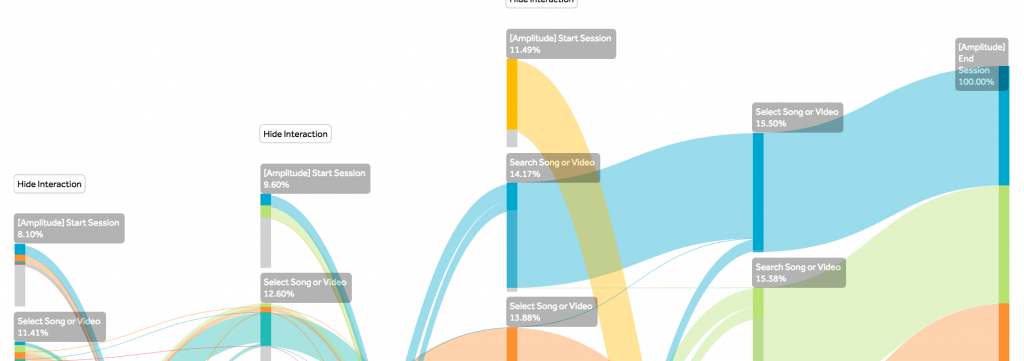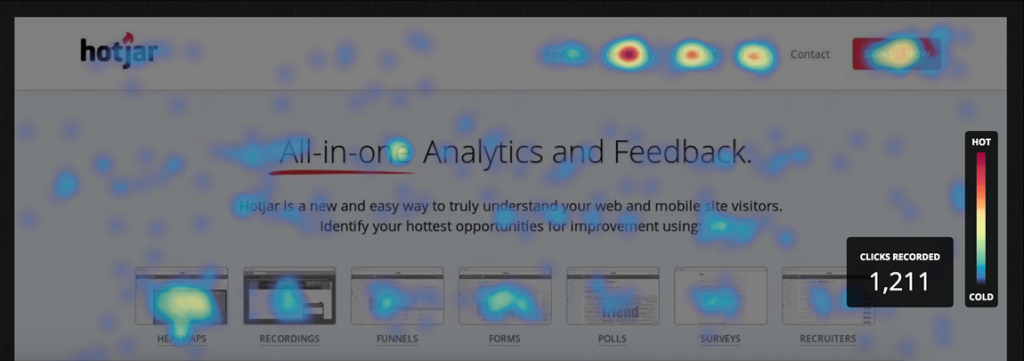Behavioural data, data that describes the observed actions of users or customers, gives you real insights into how people are or will potentially use your product. It is one thing to hear what people say they want, but to see how they actually behave is even better.
It’s also easier to get behavioural data than you might think. Whether you’re doing research, running experiments to validate a hypothesis or feature, or if you’ve just released a feature then behaviour data is your best and, arguably, most informative friend.
This post aims to help you by giving you a list of all the types of behavioural data that are available to product teams. Hopefully it gives some new options that you can consider if you’re trying to use data to drive your team’s decisions.
The list is roughly ordered from most common to least common.
We’re an Australian company so we’ve used “behavioural” not the American “behavioral”.
1: Website Analytics Data
You’re probably most familiar with this behavioural data source: page views, clicks, browser choices, device choice, etc. Website analytics are a form of behavioural data, showing how users interacted (views/clicks) with your website, mobile app or web app and the choices they made related to web browsing (device/browser/resolution).
Common tools for this type of data are Google Analytics and the more enterprisey Adobe Experience Cloud.
2: App Analytics Data
If you’re building a product you’ll be familiar with this behavioural data as well: button clicks, active usage and other user events from your applications. You can even include application and error logs here.
Common tools for this type of data are Mixpanel, Amplitude and KISSmetrics. They help you define custom events to track that your users perform. What better way to understand behaviour then to see what your users actually interact with and how they interact with it (or don’t)?
The journeys a user might take and when they stop using are also useful data points to look at. There is plenty written about all the information you can glean from user analytics so I won’t cover it here.

3: Search Data
Use search volume data from Google, Microsoft and others to understand behaviour by seeing what they are searching for. The act of searching is a behavioural data point itself and it can also provide insight into another behaviour the user or customer is undertaking.
You can get search data from Google’s Keyword Planner.
4: Ad Clicks, Competition and Impressions Data
Running ads on LinkedIn, Google, Facebook or anywhere else online provides behavioural data. You can see what messages people actually respond to versus what they say might appeal to them. You can also test out which segments will respond best to what. You can do all this almost instantly.
For example, if I wanted to understand how best to sell my product to a bank I could target facebook and linkedin ads at bank managers over 24-48 hours. I could see which phrases and variations of the ad/pitch work best. At the very least, I’ll have some initial, data-backed insights based on observed actual behaviour versus stated behaviour. This is pretty revolutionary. No more guessing about which words to use in your marketing.
5: Product Reviews/Feedback
Seeing how people actually experienced a product, the challenges they had or they things they enjoyed most is a useful insight. You don’t need to limit this to your product; you can see competitors, complements and comparables by checking out websites. Amazon provides a great trove of information for different physical goods.
When you’re analysing product reviews, remember that not all product reviews are real.
6: Customer Support Queries
The feedback from your users and customers – requests, bugs, problems – is another type of behavioural data. The fact that someone has gone out of their way to interact with you, especially in the world of digital and software-as-a-service, must carry some weight. If you have enough volume there is also analysis you can do to understand this.
You want to keep in mind the bias or context that the customer is coming from. That is, the way you market your product, how you describe a feature, the journey someone went through will all impact the type of feedback you receive.
7: Social Media
The likes, comments, hearts and shares of social media is another behavioural data source. You can even take analysis further and analyse the content/text of the comments themselves or the content of images. Compiling this information lets you see what people are actually saying, sharing or liking versus what they say they might actually interact with. This can give you insight into past or future trends.
When you’re analysing social media in order to understand behaviour, you need to consider the ease with which a user can like/share. You also want to think about the motivations behind someone might like or share. In many instances many people (myself included) haven’t actually read the content but saw a buzzword or title that sounded agreeable so they shared it.

8 Cursor Tracking
Monitoring where someone’s cursor moves over your site or app is another type of behavioural data. You can gain an understanding of what they are focusing on.
You can use tools like Hotjar to track cursors.
Keep in mind that where the cursor is is not an exact representation of what they are focusing on. That is, my eyes right now are looking at the “Share” button in Google docs but I’m typing and my cursor is in the dead centre of my screen for some reason.

9: Eye tracking
If you have access to the right facilities and technology you can take your behavioural data to the next level and track where people are focusing by tracking where they are looking. This is helpful with digital products – web apps, mobile apps, digital material – ads, web sites, other content – as well as non-digital products like supermarket shelves and billboards
10: Physical Interactions
Computer vision has improved to allow tracking of what people touched on a supermarket shelf. This can be extended to what they touch in any environment like what playground equipment, condiments or seating they used at a McDonalds.
Here is a video of AIPoly’s technology that tracks what people are using from the shelf in super markets:
11: Facial Expression Analysis
Computer vision can also help understand behaviour by reading someone’s expression while they interact with your product or your product’s marketing.
As far as behavioural data goes, you would want to carefully consider how much weight you place on aggregate analysis of facial expression recognition. For example, if we had believed what Amazon’s AI suite told us about one of our team members felt about something then we’d have thought it always invoked a negative, unhappy response. However, Amazon just couldn’t interpret his moustache and beard properly, especially when he was smiling. You’d also need to think about whether the expression they show (the emotion it infers) matters – just because I’m a bit stern looking when I sail my boat, doesn’t mean I’m not enjoying it.
12: Purchase History and Transaction Data
Seeing what someone bought is another form of behavioural data. A purchase is generally a strong indication of need or want. Some organisations have this on hand in limited forms – purchases made of their products or services. Other organisations have access to all or many of the purchases made by individuals.
You can also get access to anonymised purchase histories. I’ve often found these anonymised sources a bit too general to be applicable to a specific product. Or, there have been too many problems with the data set to make it easy to analyse in any meaningful time frame. For example, transaction data might show $124 spent at a supermarket but not what I bought. $124 of gourmet cheese is quite different to $124 of nappies.

Scott Middleton
CEO & Founder
Scott has been involved in the launch and growth of 61+ products and has published over 120 articles and videos that have been viewed over 120,000 times. Terem’s product development and strategy arm, builds and takes clients tech products to market, while the joint venture arm focuses on building tech spinouts in partnership with market leaders.
Twitter: @scottmiddleton
LinkedIn: linkedin.com/in/scottmiddleton